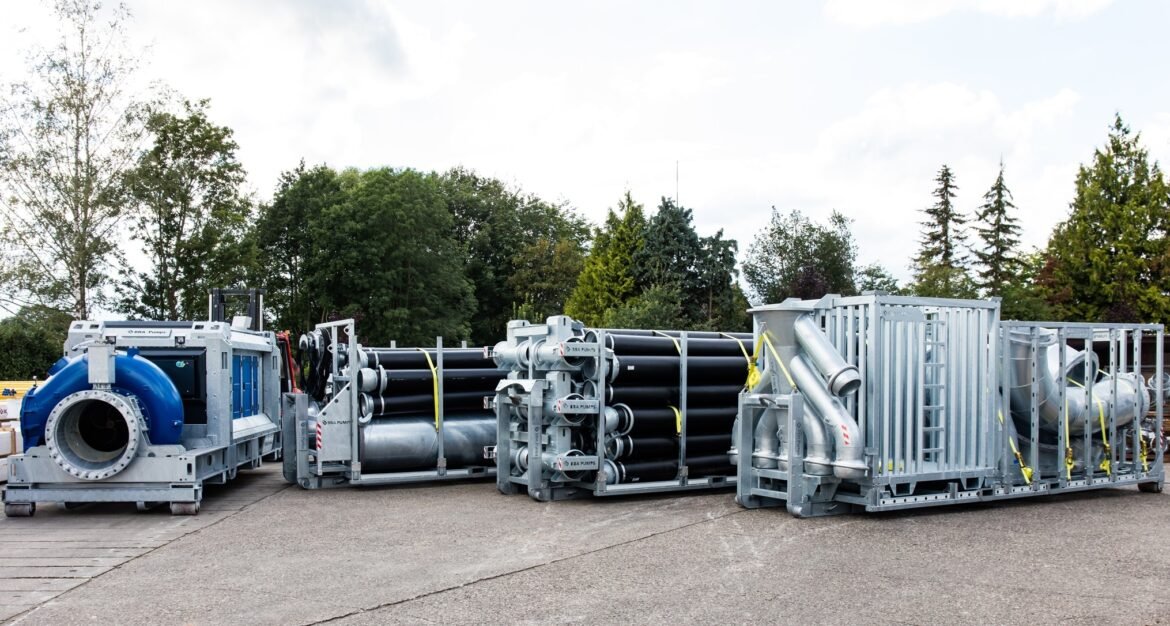Introduction
Flooding is one of the most destructive natural events, causing billions in damages every year and threatening lives, infrastructure, and the environment. Urbanization, climate change, and extreme weather events have made flood control and stormwater management more critical than ever. At the heart of these systems are pumps, which play a vital role in moving excess water to safe discharge points.
This article explores the importance of pumping systems in flood control, different types of pumps used, their applications, and best practices for efficient stormwater management.
The Importance of Pumping in Flood Control
- Rapid Water Removal: Pumps provide quick drainage during storms and floods, preventing property damage.
- Urban Infrastructure Protection: Cities depend on pumping stations to keep roads, subways, and buildings dry.
- Agricultural Safety: Pumps protect crops and farmland from standing water and erosion.
- Disaster Preparedness: Pumping systems are essential in emergency response plans for hurricanes and heavy rains.
Types of Pumps Used in Flood Control and Stormwater Management
Axial Flow Pumps
- Designed for high flow, low head applications.
- Ideal for moving massive volumes of water quickly.
- Commonly used in flood control stations and irrigation canals.
Mixed Flow Pumps
- Combine characteristics of centrifugal and axial pumps.
- Handle medium head and high flow efficiently.
- Suitable for stormwater drainage and flood-prone areas.
Submersible Pumps
- Operate underwater, eliminating priming issues.
- Compact and efficient for both temporary and permanent flood control systems.
Portable Diesel Pumps
- Used in emergency response situations.
- Provide mobility and quick deployment during severe flooding.
Screw and Archimedes Pumps
- Excellent for handling stormwater with debris.
- Common in municipal flood control where trash and solids are present.
Key Applications of Flood Control Pumps
Urban Drainage Systems
Cities with large populations rely on pumps to keep streets, tunnels, and underground spaces dry during storms.
Coastal Protection
Pumps defend low-lying coastal areas from storm surges and tidal flooding.
River and Canal Management
Pumping stations regulate water levels in rivers and canals to prevent overflow.
Agriculture and Farmland Protection
Drainage pumps protect crops from flooding during heavy rainfall or rising groundwater.
Emergency Disaster Response
Mobile pumping units are deployed during extreme events like hurricanes, flash floods, and dam breaks.
Challenges in Stormwater Pumping
- Debris Handling: Stormwater often carries trash, mud, and vegetation that can clog pumps.
- Power Supply Issues: Floods may disrupt electricity, making diesel-driven pumps essential backups.
- Sizing and Capacity: Underestimating system needs can lead to pump failure during peak flooding.
- Maintenance: Pumps must be regularly tested and serviced to ensure readiness.
Best Practices for Effective Pumping Solutions
Proper Pump Selection
Choose pumps based on flow requirements, head conditions, and type of water (clean, dirty, or debris-laden).
Redundancy in Pump Stations
Installing multiple pumps ensures backup capacity during peak floods.
Integration with Smart Systems
Automated monitoring and control systems optimize performance and provide early warning of pump failures.
Routine Maintenance and Testing
Regular inspections, lubrication, and test runs guarantee reliability when floods occur.
Sustainable Approaches
Combine pumping with green infrastructure like retention ponds, wetlands, and permeable pavements to reduce flooding pressure.
Case Examples of Pumping for Flood Control
- New Orleans, USA: After Hurricane Katrina, massive pumping stations were upgraded to handle storm surges.
- The Netherlands: Known for advanced flood control, with pumping stations, dikes, and storm surge barriers protecting lowlands.
- Asia’s Mega Cities: Cities like Bangkok and Jakarta rely heavily on stormwater pumps to combat seasonal floods.
Conclusion
Flood control and stormwater management depend heavily on reliable pumping solutions. With the right pump selection, regular maintenance, and integration into broader drainage strategies, pumps can protect communities, infrastructure, and agriculture from devastating floods.
As climate challenges grow, investing in modern pumping systems is not just about safety—it is about resilience and sustainability.
FAQs
Q1: What type of pump is best for flood control?
Axial flow pumps are commonly used for large-scale flood control due to their ability to move huge water volumes quickly.
Q2: Can stormwater pumps handle debris?
Yes, screw pumps, Archimedes pumps, and specially designed submersible pumps are built to handle debris-laden water.
Q3: How often should flood control pumps be tested?
At least monthly, with full-capacity testing annually, to ensure they are ready for emergencies.
Q4: Why do cities need pumping stations if they have drainage systems?
Gravity drainage is not always sufficient, especially in low-lying or coastal areas. Pumps provide the extra force needed to move water.
Q5: Are portable pumps effective in emergencies?
Yes, portable diesel pumps are essential for rapid response during severe floods when permanent systems are overwhelmed.

